Geological conditions mean surface water has always been relatively scarce in Croatia’s Velebit Mountains. Changes in land use and climate are now making it even scarcer. This blog by Rewilding Velebit Communications Officer Kruno Bošnjaković explains how the local rewilding team are helping Velebit wildlife by providing reliable and safe sources of water across the landscape.

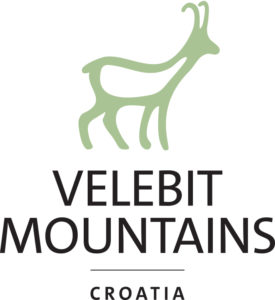 Water and wildlife
Water and wildlife
Today, rewilding in the Velebit Mountains of Croatia – a dramatic and nature-rich 150-kilometre long massif that runs parallel to the country’s Adriatic coast – is really taking off.
By showcasing a new way of managing wildlife within a collection of hunting concessions, we are working to scale up the transition from traditional hunting operations to wildlife watching across the landscape. This, in turn, means that a growing number of people and communities are benefitting from the wildlife comeback that rewilding is bringing about. The availability of water in the landscape is critical to this comeback.
Geology vs land use
The Velebit region of Croatia encompasses over 200,000 hectares of karst mountains. In karst landscapes, which are typically very porous, rainwater quickly filters in the soil and underlying rock, leading to a lack of streams, rivers, and other surface water. During the long, hot summers, there is very little water available for wildlife in the area.
When the Velebit Mountains were used extensively for livestock grazing, as was the case in the past, local communities solved this problem by building water reservoirs that effectively stored water. Old maps of Velebit show water bodies dotted across the landscape – man-made ponds and wells, as well as natural springs. These not only benefitted domesticated animals, but provided safe and reliable access to water for a wide range of wildlife species.
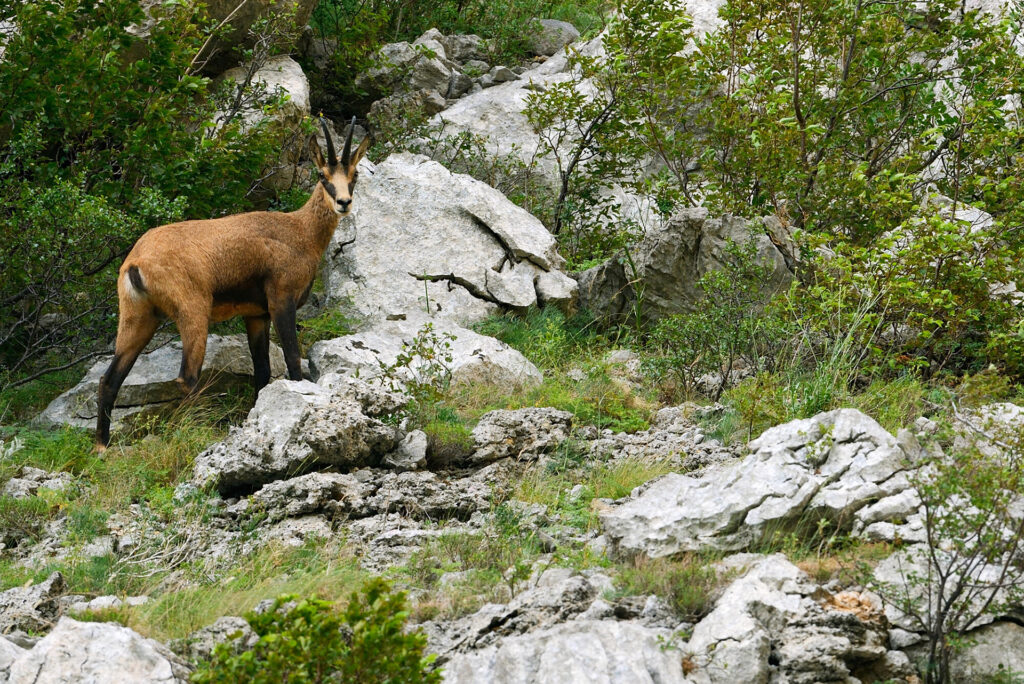
A declining resource
In recent decades, rural depopulation has led to a decline in animal husbandry in Velebit, which means the need for ponds and wells in the area has now largely disappeared. Through lack of use and maintenance, these water sources have started to deteriorate. Wells are collapsing and water ponds are becoming overgrown and muddy, significantly reducing access to fresh water for wildlife.
This problem is made worse by the impact of climate change, which is resulting in less snow, fewer rainy days, and longer, more intense summer heatwaves. This combination of factors means there is less and less water in the landscape, with natural springs drying up far more frequently.
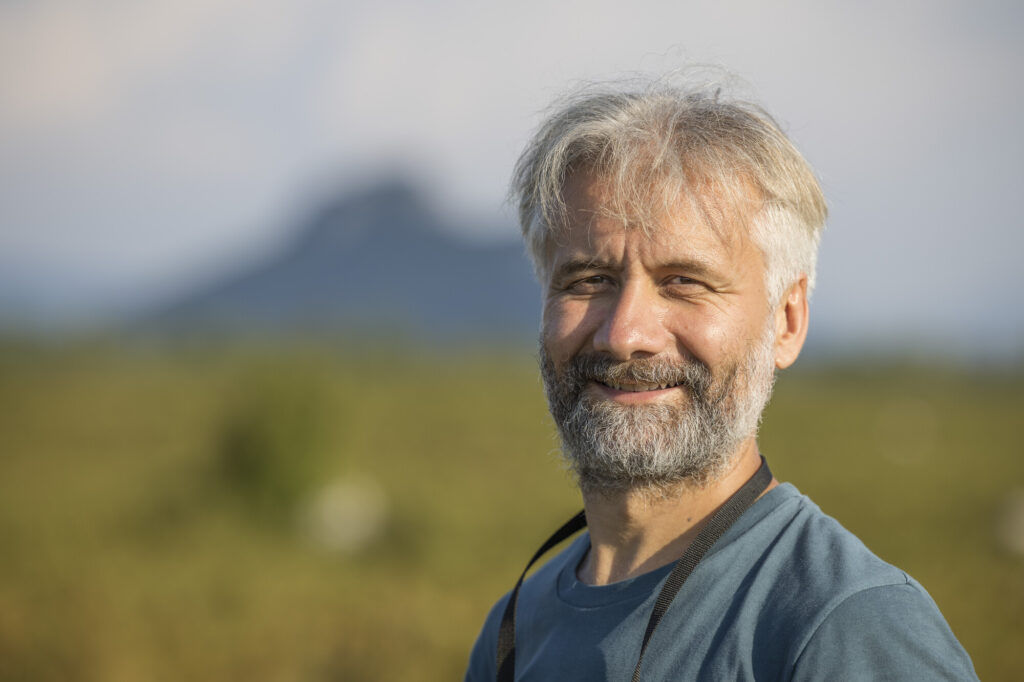
Enhancing access to water
In 2017, to increase the availability of water to Velebit wildlife, we started an ongoing programme to restore and construct new ponds, and to secure and restore old wells. The first water pond, built seven years ago on Ružne Drage, is still in good order. Since then, the team has worked on over 30 water ponds and wells.
The importance of these water bodies for Velebit wildlife is huge.
“Smaller aquatic habitats, such as ponds, not only provide animals with fresh water for drinking and bathing, but are also vital refuges for smaller wildlife species such as frogs and salamanders,” explains Rewilding Velebit team leader Marija Krnjajić. “Our efforts to build, restore, and maintain ponds have given us an ever-increasing understanding of the wonder and complexity of wild nature here.”
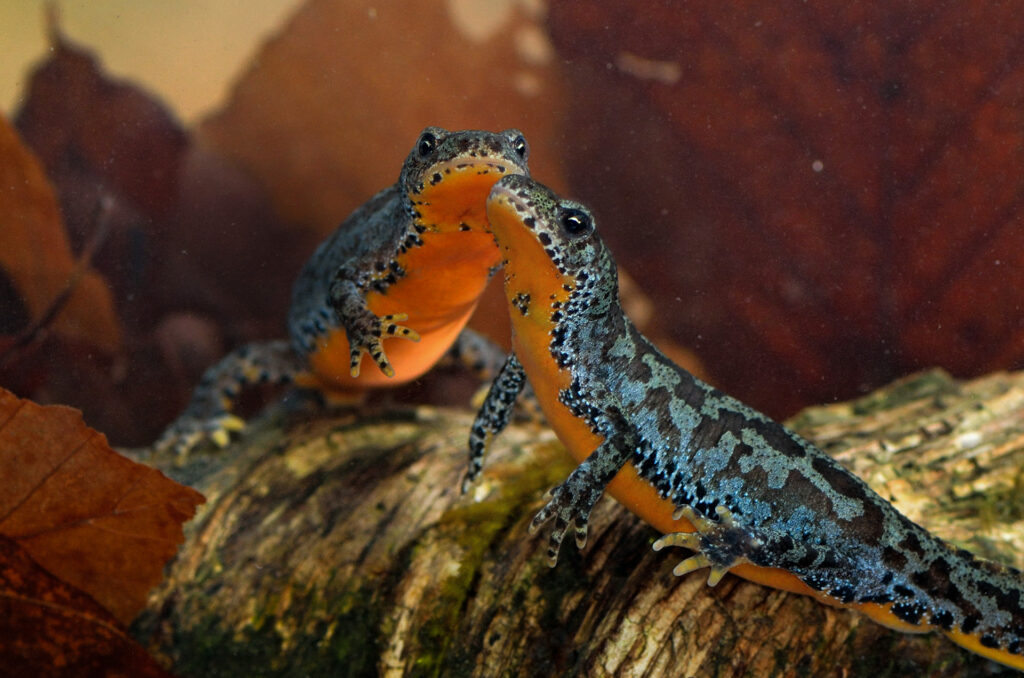
Restoring, building and safeguarding
To restore and construct ponds, we take every opportunity to use natural materials, such as clay and stone. The bottoms of ponds are layered with waterproof clay, while the side walls, if possible, are reinforced with rocks. New ponds are installed in remote locations lacking in surface water, in places where natural depressions allow water to gather more quickly and easily. With regular maintenance, these ponds can act as reliable source of water for wildlife for decades.
When the man-made wells and water tanks that are distributed across Velebit fall into disrepair they can become dangerous for wildlife. Wooden covers rot and eventually fall to pieces, leaving well shafts and tank interiors exposed. If an animal falls in, it is often impossible for it to climb out.
To address this issue, we often build access ramps, which allow animals to use tanks and wells safely. In places where there are alternative and reliable sources of water available nearby, potentially dangerous tanks are closed off. Sometimes the team will leave a branch in place, which enables smaller animals such as amphibians to enter and exit the water easily.
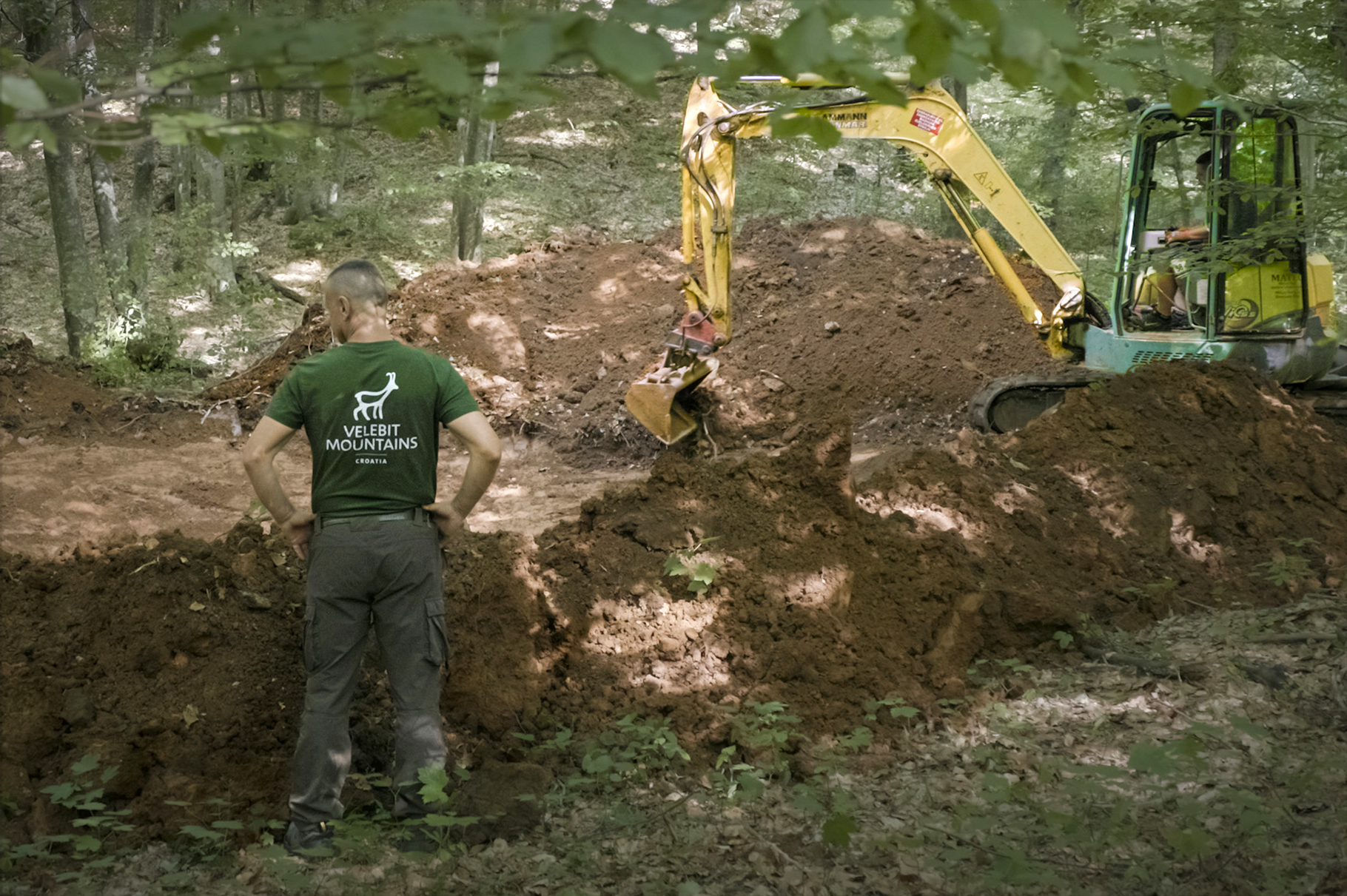

Promoting wider biodiversity
By enabling wildlife to survive and thrive, artificial sources of water support the enhancement of natural processes in the landscape, such as natural grazing and predation. Large, free-roaming herbivores such as deer help to maintain biodiversity-rich grasslands through their grazing, and form an important part of local food webs involving predators and scavengers.
In the longer term, we are working to reduce the dependence of wildlife on artificial sources of water by enhancing the connectivity of winter and summer habitats in the Velebit region. This will allow many wildlife species to more easily access natural sources of fresh on the landward side of the Velebit Mountains, where rivers and streams flow throughout the year.
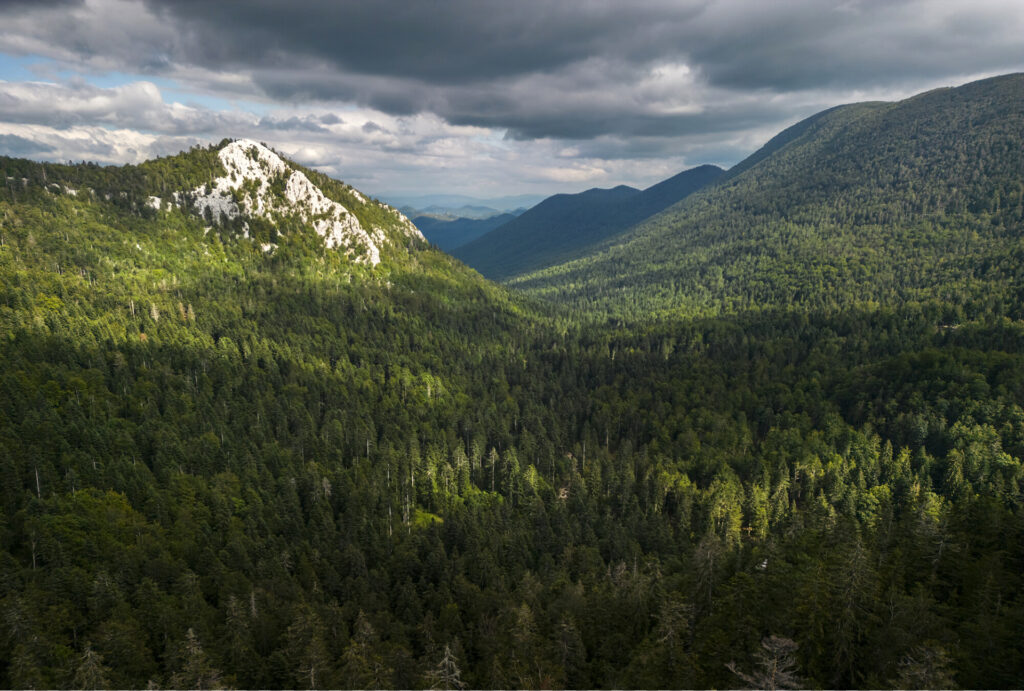
Scaling up
Maintaining existing water bodies and constructing new ones is an ongoing activity for the Rewilding Velebit team. The need for water in karst areas extends beyond the rewilding landscape, so we have started installing new water ponds outside of them too. The first such pond was constructed this spring in northern Velebit, in partnership with the owner of a neighbouring concession. It is encouraging to think that the map of Velebit is increasingly covered with blue topographic marks that signify life, as was the case in times gone by.
Invaluable support
Rewilding Europe’s work in our rewilding landscapes is supported by a wide range of highly valued partners. We would particularly like to acknowledge those providing core funding – notably the Ecological Restoration Fund, the Dutch Postcode Lottery, WWF-Netherlands, and Arcadia. Their longstanding support plays a critical role in enabling us to deliver and scale up rewilding impact.
